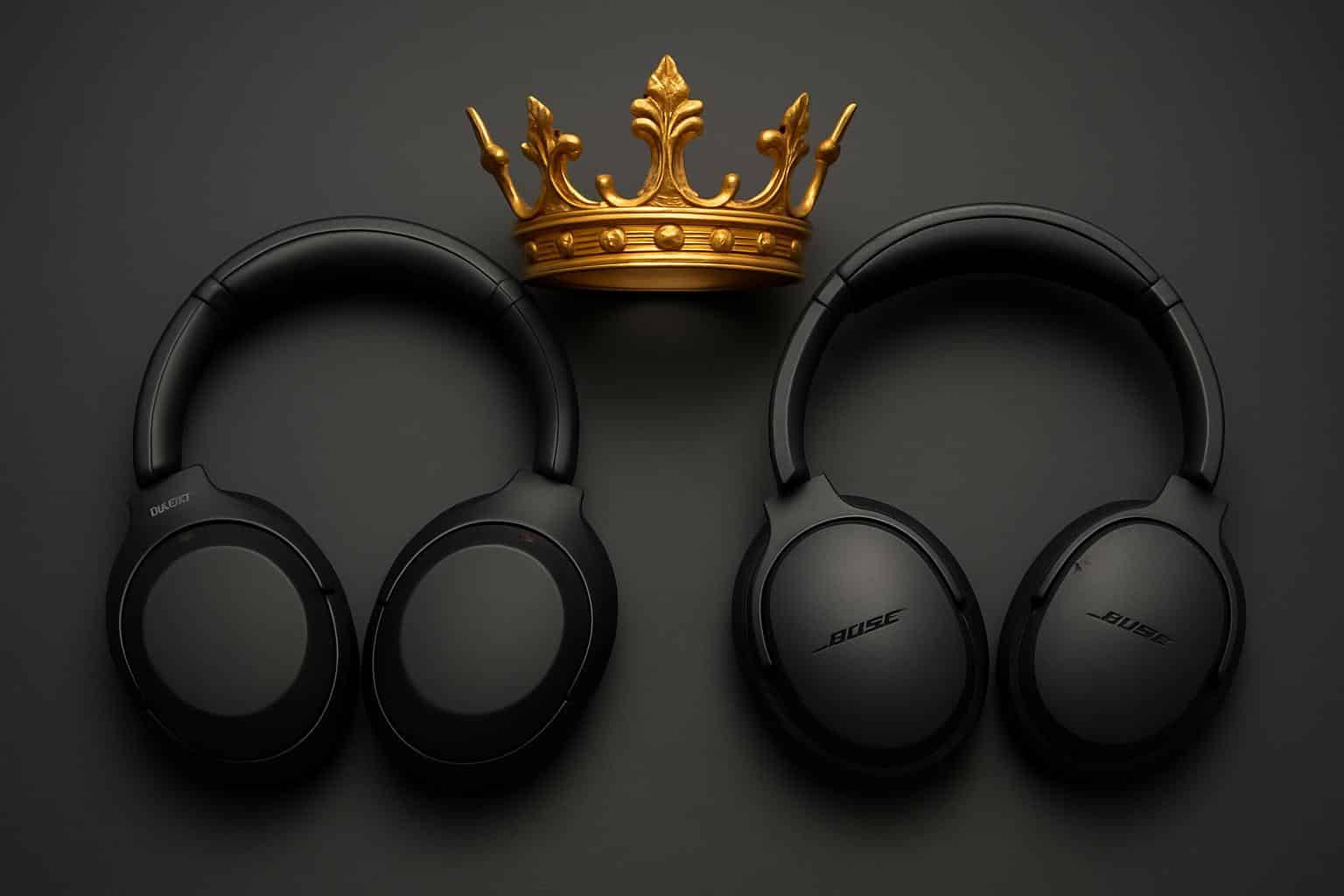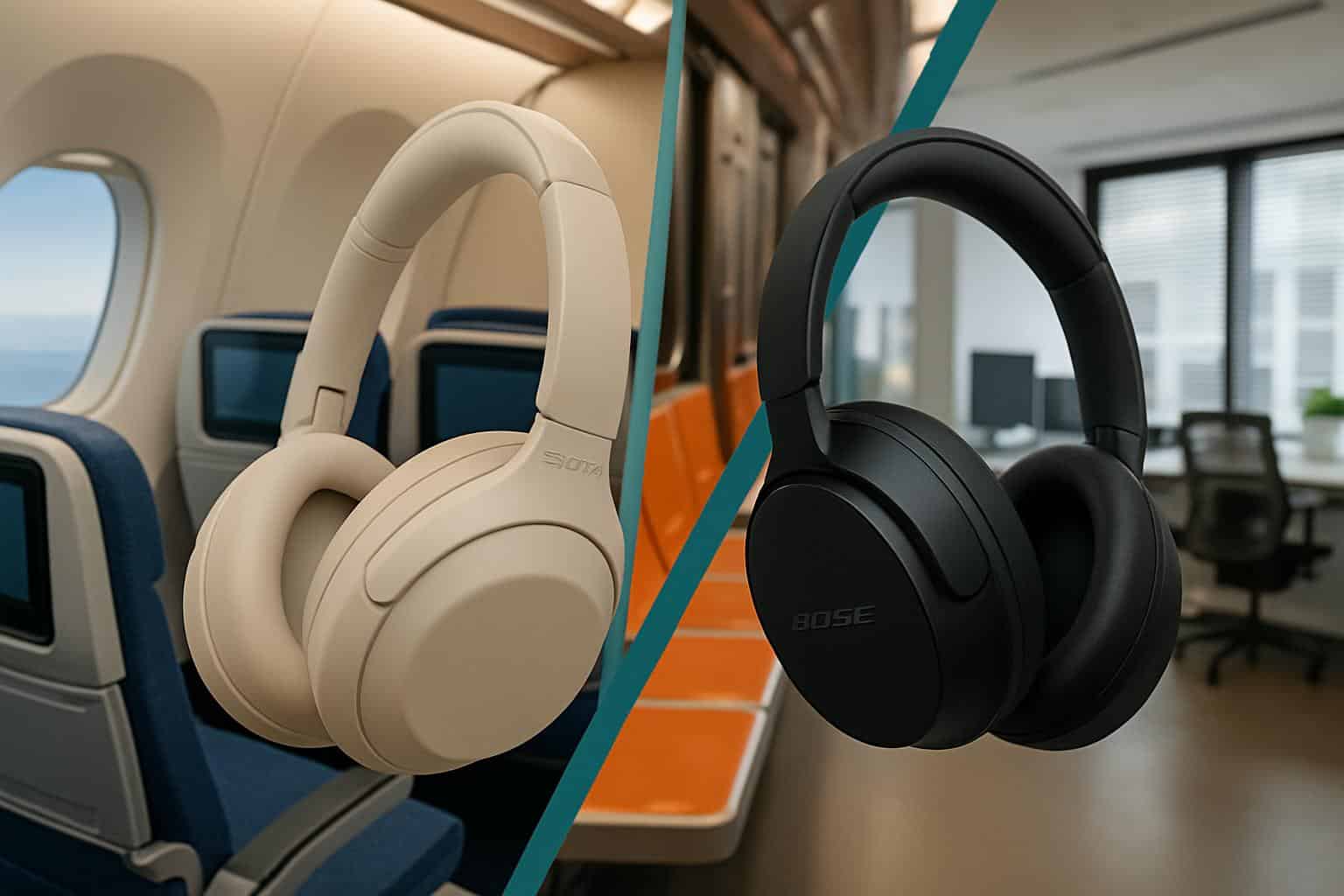During the past week, traveling to and from airports, on subway rides, and in an open-office setting — I switched between Sony’s WH-1000XM6 and Bose’s QuietComfort Ultra Headphones (2nd Gen). Both are premium, refined, and purpose-built to be quiet. But when the desired state is dead quiet, one pair inches slightly ahead. Here’s a side-by-side comparison to help you decide between the two, and which one is reigning supreme when it comes to active noise cancellation.
ANC performance and real-world testing across scenarios
Airliner cabins are typically in the 75–85 dB range, according to aviation and occupational noise studies, most of it low-frequency engine rumble. It just so happens to be the range where today’s more advanced hybrid ANC systems shine. Both headphones knocked down the drone in back-to-back flights so convincingly that podcasts at moderate volume were intelligible without inducing fatigue.

Sony’s WH-1000XM6, though, tamped down that sub-200 Hz energy a touch more and also held up better in variable noise, such as when the cabin pressurization adjusted or a drink trolley rattled past. In the subway, Sony also better tamed mid-band clatter with somewhat less hiss and fewer pressure artifacts. Third-party labs like RTINGS have typically suggested Sony’s flagship line sits at or near the top when it comes to bass and mids attenuation, and the XM6 keeps up that trend in action.
Bose is still superb. Bose QuietComfort Ultra Headphones (2nd Gen) are eerily quiet in offices and coffee shops, and they continued to perform stably outdoors against the wind. But right now, Sony barely outperforms if you want the most potent overall hush. The difference is not night and day, but it’s audible in trying environments.
Sound quality and tuning tools for both headphones
Out of the box, Bose leans into a user-friendly curve: punchy bass, dynamic highs, and a current but laid-back midrange. It’s a fun sound, especially for pop and film scores. Sony aspires to a flatter baseline with stronger midrange clarity, which benefits vocals and acoustics.
Customization is another area. Sony’s Headphones app offers clear EQ control and useful presets. It enables you to add sensible warmth around a studio-flat baseline without losing mids. Bose’s app is essential and dependable, but it only provides a three-band EQ without labeled center frequencies. Hence, it’s difficult to make specific modifications. Sony is the more suited pick if you want to tune your sound.
Connectivity, codecs, and high-res audio support
Both deliver Bluetooth over SBC and AAC, and both have a direct line option — but the paths vary. Sony includes LDAC, which can climb to 990 kbps over Bluetooth, and it’s currently integrated into contemporary Android phones. The XM6 also supports LC3, which is good for efficiency and a component of the LE Audio specification backed by the Bluetooth SIG.
Bose goes with Qualcomm’s aptX Adaptive, which modifies bitrates on the fly for balance and latency in the Snapdragon Sound ecosystem. If your phone supports aptX Adaptive, you’re set for high-quality wireless. If it doesn’t, Bose has a clever trick up its sleeve: USB-C wired audio. Plugging directly into a laptop or phone via USB-C supports digital, high-resolution listening without a separate dongle, while a 2.5 mm analog jack is handy for offices, airplanes, and legacy devices. Sony keeps things simple with the classic 3.5 mm analog cable for wired listening and supports USB-C audio.

Bose’s fused options may be more crucial for the canvas-hopping frequent traveler, who bounces between laptops, tablets, and seatback systems.
Comfort, controls, and daily ergonomics impressions
Both headsets are light, robust, and feel expensive. Bose distributes the weight more evenly across the top with slightly softer pads and a more delightful clamp. I noticed less pressure-point buildup after three consecutive hours on the Bose. The Sony feels no stress, but I forget the Bose is on me after a while.
Both sets of controls have stable ergonomics. Sony’s touch motions are responsive and efficient, with features like Quick Attention and Speak-to-Chat that silence the volume when you start talking. Bose employs a trusty button-first method and Immersive Audio as a secondary, with a movie and gaming mode, to make its case.
Battery life, calls, pricing, and our final verdict
Battery life is estimated at 30 hours with ANC on for both flavors, and that figure was supported in mixed-use testing. Multipoint connectivity behaved as expected, engaging automatically between laptops and phones while on my head. Call quality was excellent, relying on beamforming mics and effective noise suppression for the other side to hear you while strolling the streets of Bangalore. Sony slightly outperforms in isolating my voice in wind, but Bose sounds a bit more natural on a windless sunny evening.
Both headphones are priced at $449. The Sony WH-1000XM6 remains the one to get if your only priority is the most powerful ANC available today, despite its “relatively high” price, thanks to its continuing reign as the quietest and most versatile design available, even if you have to install an app on your phone and tweak it constantly. If you want the most comfortable and bassy listening experience straight out of the box, plus USB-C wired audio, the Bose QuietComfort Ultra Headphones (2nd Gen) is what you want.
Neither lineup is going anywhere for a while; in the interim, hold fast to these recs. The difference in noise is minimal, but it nevertheless exists. A few decibels of quiet on a bus or airplane can mean the difference between pulling up to your house and sinking into a couch refusing to get up; in that sense, Sony rules the day, but Bose is a close second.
Methods note
Conclusions are drawn from back-to-back real-world usage and supplemented with codec/standards guidance from the likes of Bluetooth SIG and Qualcomm literature — and compared to trends we have seen reported by independent labs like RTINGS and Consumer Reports.

